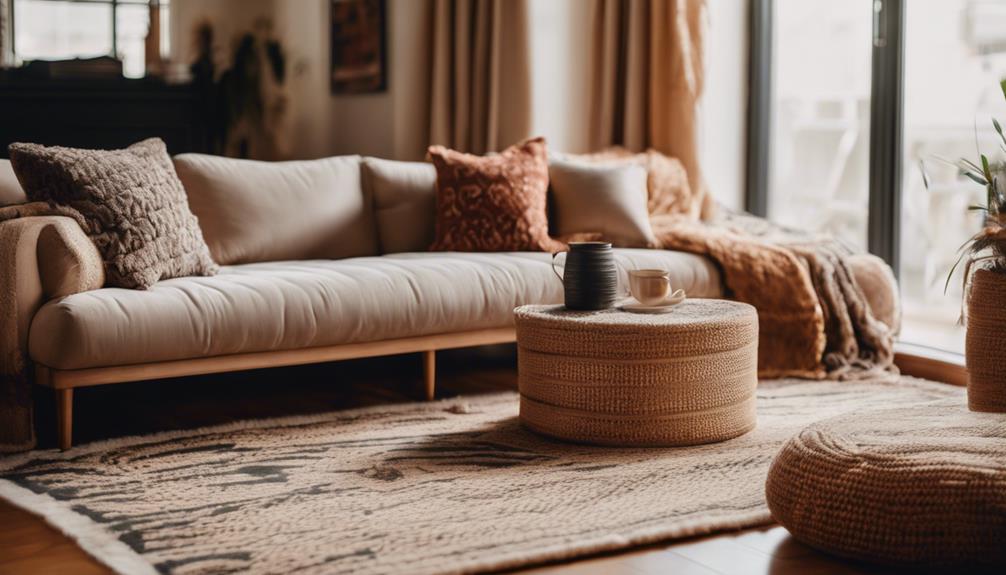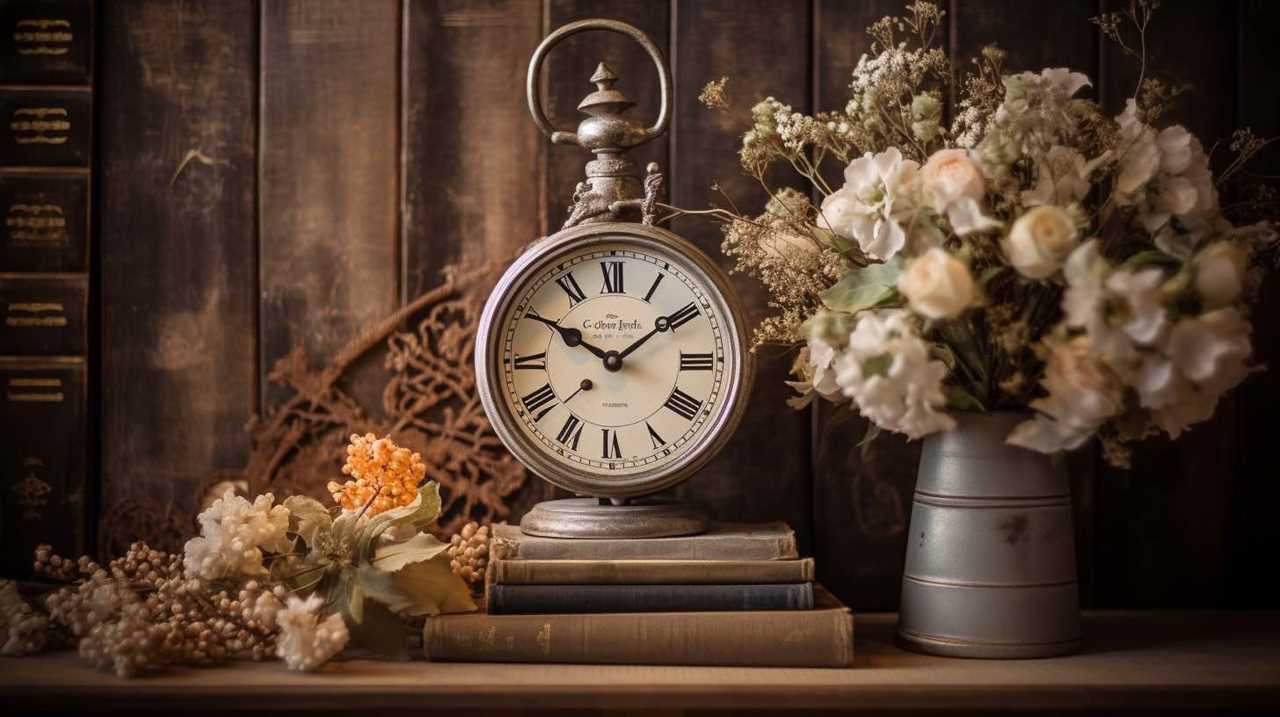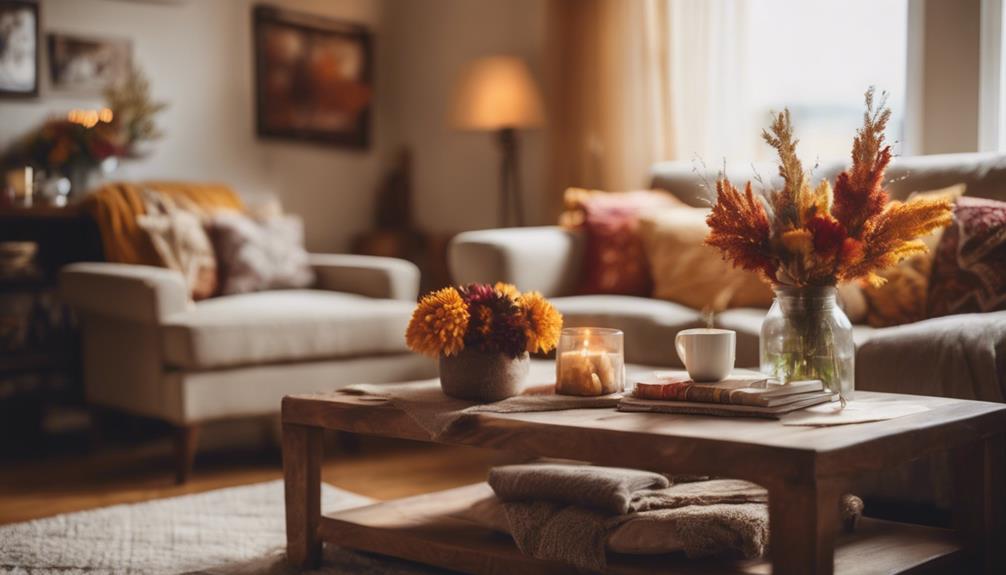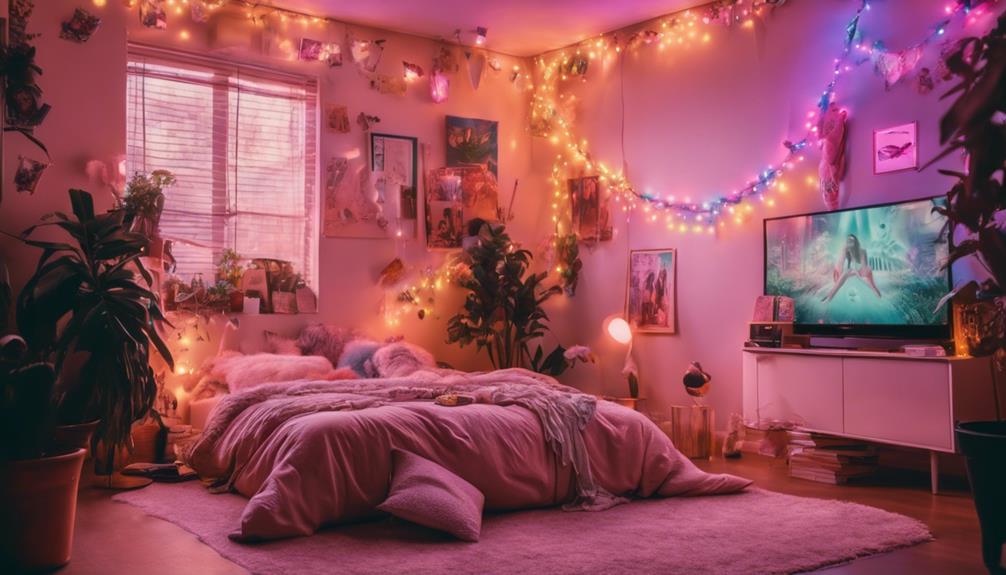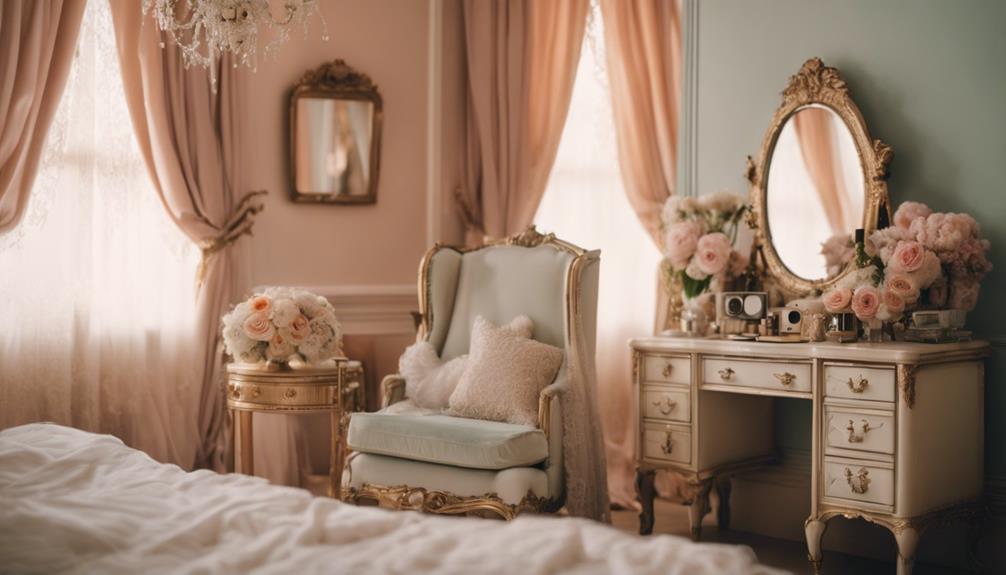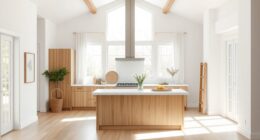To instantly add depth and interest to any room, start by mixing textures. Combine plush cushions with sleek leather furniture or layer a chunky knit throw over a minimalist chair. Incorporate natural elements, like plants, to enhance warmth. Use wall treatments and varied floor coverings to create engaging focal points. Remember, it's all about balance—too many textures can overwhelm your space. Also, consider how colors interplay with textures; rich hues create coziness, while lighter tones enhance depth. By mastering these tips, you'll create visually appealing environments in no time, and there's plenty more to explore!
Key Takeaways
- Incorporate a mix of textures, like plush fabrics with polished surfaces, to create visual contrast and depth in your space.
- Layer natural elements, such as plants and flowers, alongside varied textiles to enhance the organic feel of the room.
- Use strategically placed lighting to highlight textured surfaces and create dramatic focal points within the design.
- Choose a cohesive color scheme that harmonizes with your textures, ensuring a balanced and inviting atmosphere.
Importance of Texture in Design
Why should you pay attention to texture in design? It transforms flat spaces into engaging environments that captivate the senses.
Texture adds visual interest, giving depth to your rooms and making them feel more inviting. By layering textures, you can create a rich tapestry of materials and textures that harmonize beautifully. Think about how a smooth leather chair contrasts with a chunky knit throw; this interplay enhances the overall aesthetic and creates a cohesive design.
Textured walls, like fluted paneling or shiplap, redefine the mood of a space. They draw the eye, making the room feel dynamic rather than flat. When you use different textures, you also influence the perceived temperature and ambiance, helping to craft an inviting atmosphere that welcomes guests.
Incorporating texture isn't just about visual appeal; it's a powerful tool that guides the viewer's experience and emotional response. By thoughtfully selecting and combining textures, you can narrate a story through your space, ensuring that your design feels intentional and curated.
Understanding Texture and Its Effects
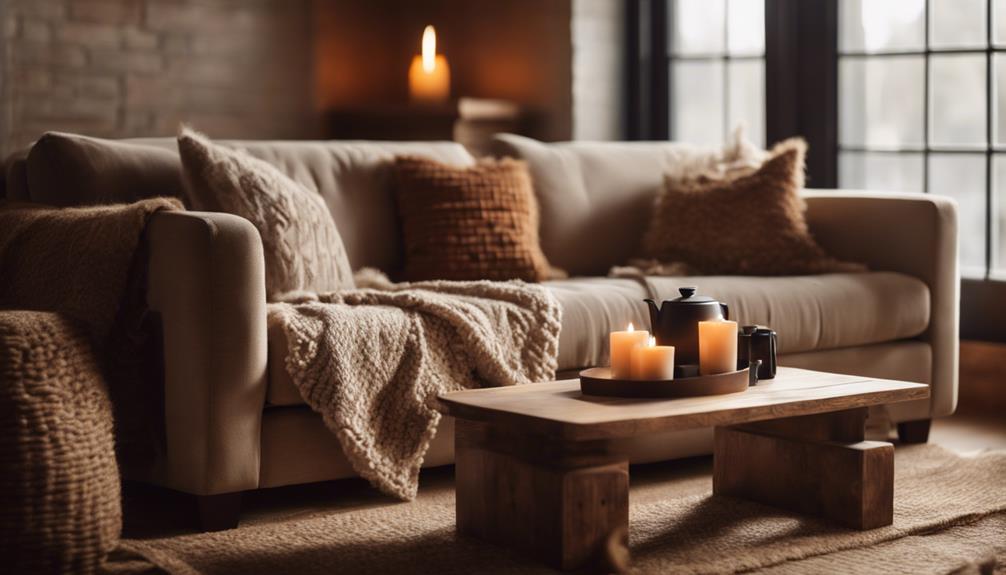
Texture plays an essential role in shaping your space's atmosphere and can dramatically influence how a room feels and functions. By understanding texture in interior design, you can create depth and dimension, enhancing the overall appeal of your space.
Incorporating varied textures is important for visual interest. Consider the following when adding texture:
| Material Type | Effect on Space |
|---|---|
| Soft Fabrics | Warmth and comfort |
| Natural Elements | Organic and grounding |
| Patterned Textiles | Dynamic and energizing |
| Smooth Surfaces | Sleek and modern look |
Layering of textures is key to achieving a balanced room. Mixing different materials like wood, stone, and fabric can create a cohesive design that invites touch and engagement. However, it's essential to balance smooth and rough textures to avoid visual chaos. This balance maintains harmony within your color scheme and design elements, ensuring your space feels inviting and well thought out. By mastering texture, you can transform any room into a dynamic and inviting sanctuary.
Mixing Textures for Visual Appeal
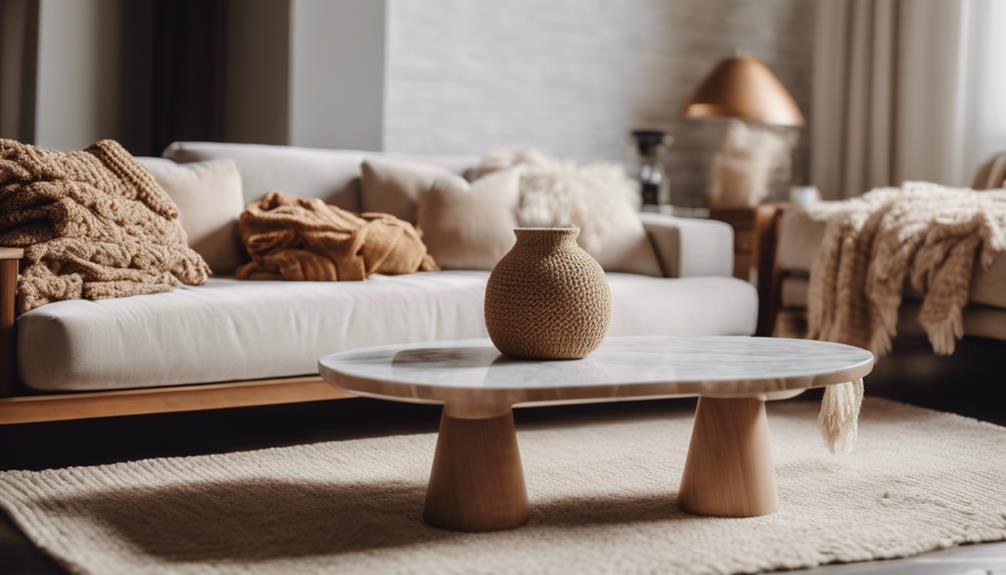
Creating a harmonious blend of materials can elevate your room's design, making it feel both inviting and dynamic. By mixing different textures, you not only add depth and interest but also create visual appeal that grabs attention. Consider layering textures to enrich your space with a variety of materials, colors, and patterns that work together cohesively.
- Combine polished stone with plush fabrics for a striking contrast.
- Incorporate natural elements like wood or stone to enhance the organic feel.
- Use throws, cushions, and rugs to introduce softness amid hard surfaces.
When mixing textures, remember to balance scale and proportion. This guarantees that each element complements the others without overwhelming the space.
Practical Ways to Add Texture
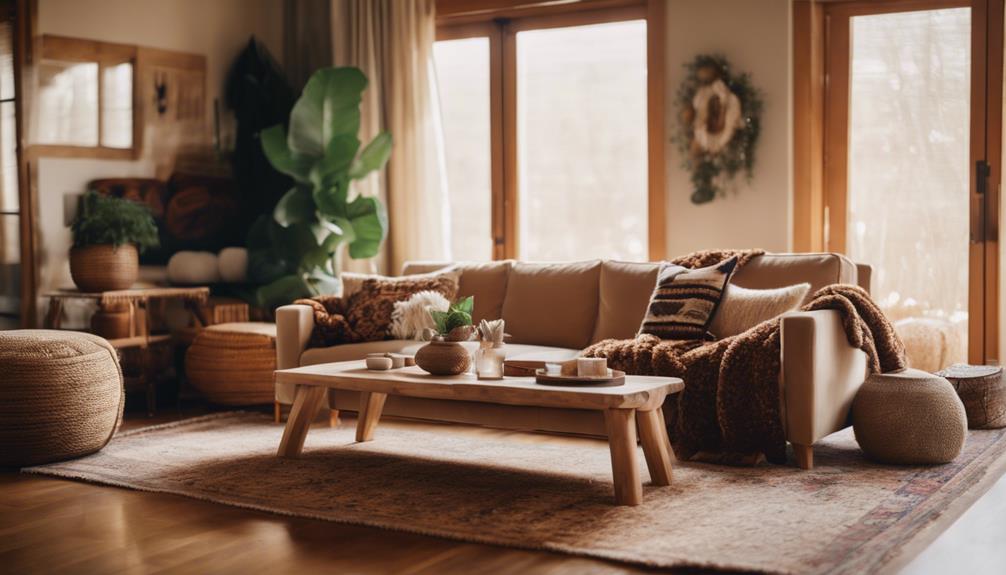
You can easily enhance your space by incorporating architectural features like crown molding or shiplap, which add depth and character.
Layering different textures through soft furnishings and floor coverings creates a tactile experience that invites comfort.
Architectural Features Enhancement
Incorporating architectural features like crown molding and wainscoting instantly adds depth and sophistication to your space. These elements don't just enhance aesthetics; they also create an engaging atmosphere that draws the eye.
To elevate your room's design, consider the following practical tips:
- Use textured wall treatments like shiplap or exposed brick to establish a compelling focal point.
- Incorporate varied floor coverings, such as plush rugs or sisal mats, to define areas and enhance tactile experiences.
- Select furniture pieces with unique textures, like a velvet sofa or reclaimed wood table, to enrich your room's design narrative.
Layering Textures Effectively
Architectural features set the stage for layering textures effectively, transforming a room into a visually engaging and inviting space. By combining various materials, you can create visual interest and warmth throughout your home. Start by incorporating contrasting textures; think plush cushions against a sleek leather sofa. This not only enhances depth but also invites comfort.
Here's a quick guide to layering textures:
| Texture Type | Example | Purpose |
|---|---|---|
| Soft Fabrics | Throw blankets, pillows | Add warmth and coziness |
| Natural Elements | Woven baskets, stone accents | Provide depth and balance |
| Hard Surfaces | Wood furniture, metal accents | Create contrast and structure |
| Lighting Options | Floor lamps, accent lights | Highlight textures and create visual effects |
Incorporating these elements can transform any room. Explore different lighting options to showcase your unique texture choices. Remember, layering textures not only adds depth but also invites you and your guests to experience comfort and style. So go ahead, experiment with texture to create a space that's truly your own!
Common Texture Application Mistakes
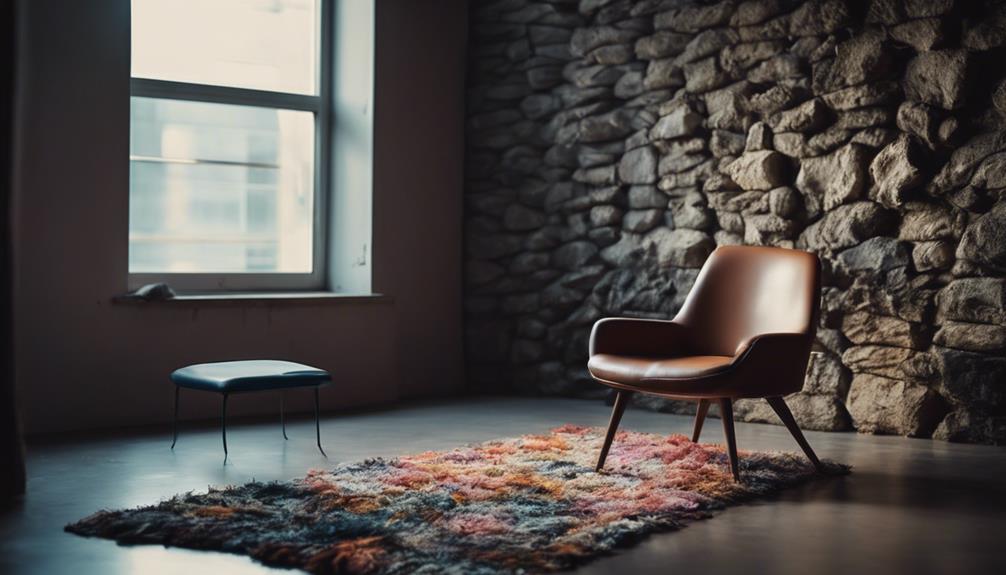
Hanging artwork too high can disrupt visual balance, making a room feel disconnected and uninviting. You mightn't realize it, but there are several common texture application mistakes that can impact your space's overall appeal. Pay attention to these pitfalls in order to create a cohesive space that feels inviting.
- Using prints that are too small: This can lead to a cluttered look, reducing visual impact.
- Neglecting to take into account texture in furniture choice: Furniture that lacks texture can make the room feel flat and uninviting.
- Overloading textures: Using too many different textures can create visual chaos, making it hard for the eye to settle.
To avoid these common texture application mistakes, limit the number of different textures you use and make sure they complement your color palette.
The Role of Color in Texturing
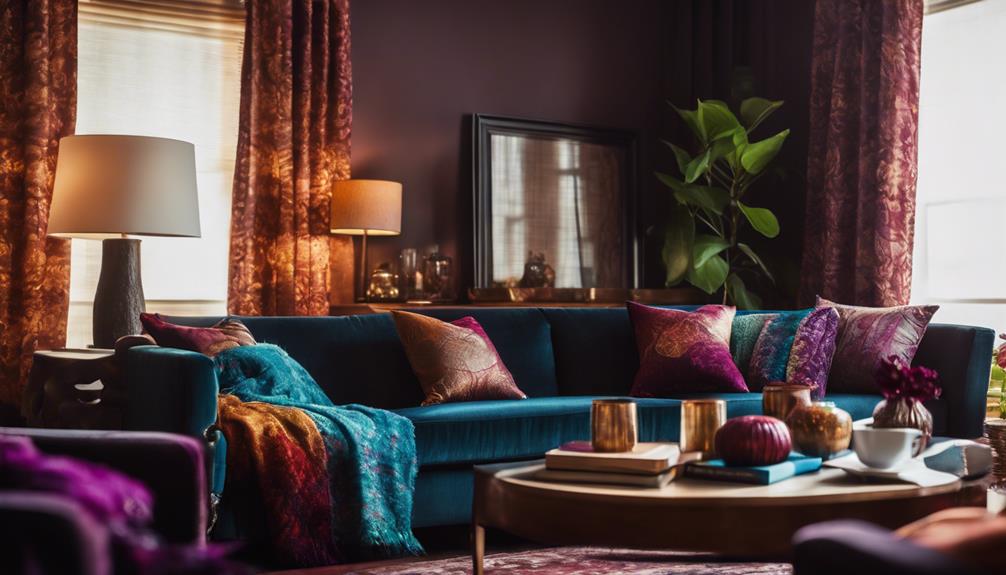
Color plays an essential role in enhancing texture, as it can either highlight or soften the visual impact of various surfaces in a room. When you focus on color selection, you can create depth and emotional responses that resonate with your space's design features.
Here's a quick guide to help you understand how different colors interact with texture:
| Color Type | Effect on Texture | Best Use Cases |
|---|---|---|
| Bold Colors | Highlights surface details; adds sophistication | Accent walls, statement pieces |
| Neutral Colors | Creates a harmonious backdrop; promotes cohesion | Living rooms, bedrooms |
| Light Colors | Reflects light; enhances depth perception | Small spaces, ceilings |
| Rich Pigmented Colors | Fosters a cozy atmosphere; transforms mood | Dining areas, cozy corners |
Combining neutral colors with textured elements can enhance visual interest without overwhelming the room. Meanwhile, light colors not only reflect light but also make textured surfaces pop, adding a layer of depth. A strategic contrast between textured surfaces and surrounding elements can evoke emotional responses, drawing attention to the design features that matter most.
Layering Techniques for Depth
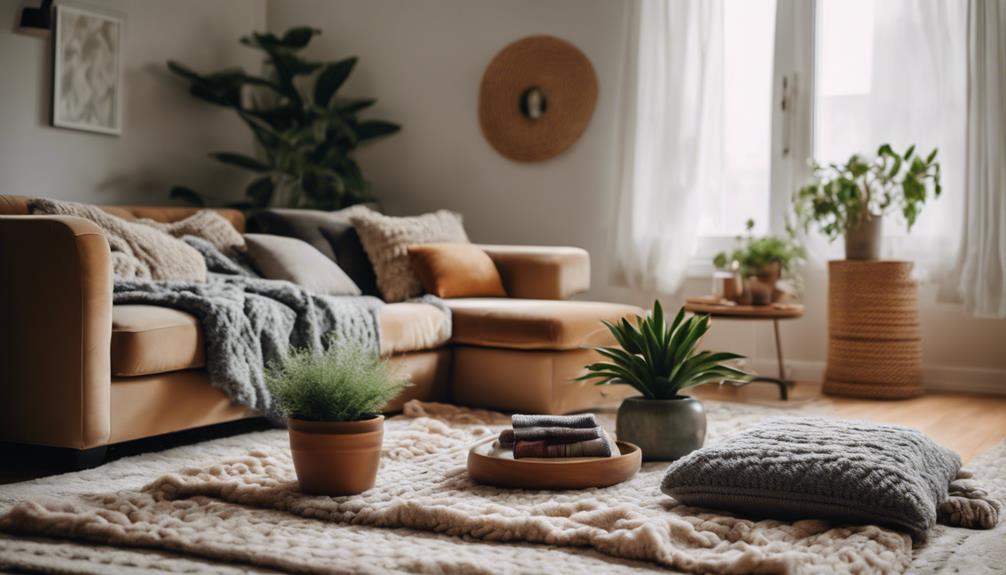
Layering different textures in your space can transform it into a visually rich and inviting environment. By employing effective layering techniques, you can add depth and visual interest to your interior design. Start by mixing contrasting materials, such as pairing a plush rug with sleek leather furniture. This combination enhances tactile experiences and makes your room feel more engaging.
Consider these tips to create a cozy atmosphere:
- Combine fabrics: Use linen curtains alongside a chunky knit throw for added warmth.
- Introduce natural elements: Strategically place plants and flowers to incorporate organic textures, enriching your multi-layered environment.
- Play with furniture: A velvet sofa paired with a reclaimed wood coffee table creates an inviting focal point.
Enhancing Spaces With Lighting
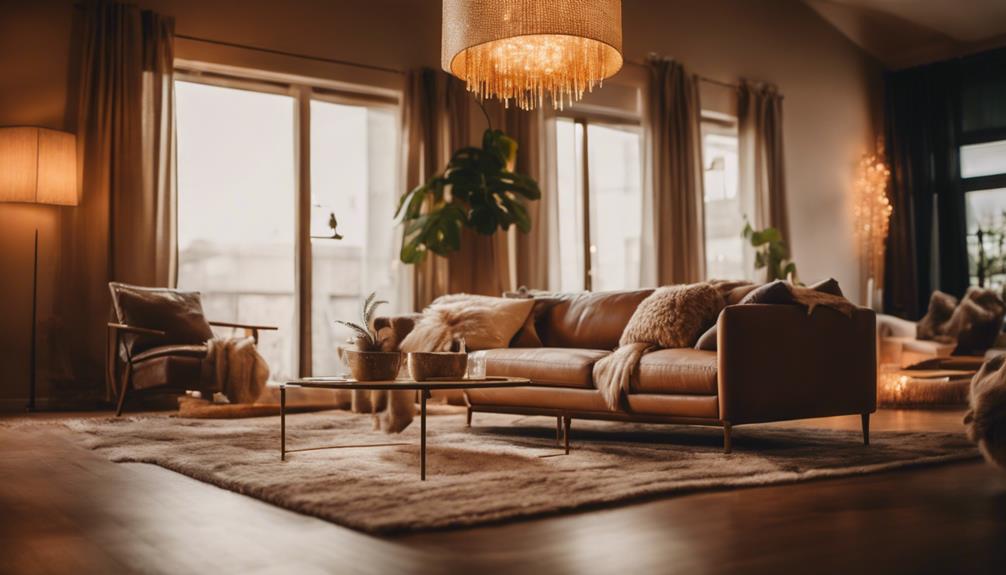
When you think about enhancing your space, lighting plays a vital role in showcasing texture.
By strategically layering ambient, task, and accent lighting, you can highlight the unique features of your room.
This approach not only adds depth but also elevates the overall aesthetic, making your textured elements truly stand out.
Layered Lighting Techniques
To create a dynamic and inviting atmosphere, you can use layered lighting techniques that combine ambient, task, and accent lighting in your space. This approach not only enhances visual interest but also adds depth and texture to your room. By strategically placing different light fixtures, you can highlight specific architectural features and create a sense of warmth.
Here are some tips to effectively implement layered lighting techniques:
- Mix light sources: Combine floor lamps, pendant lights, and wall sconces for a balanced look.
- Use dimmer switches: Adjust lighting levels to set the mood based on the time of day or activity.
- Incorporate natural light: Take advantage of windows and skylights to enhance ambiance throughout the day.
Highlighting Textural Features
Strategically positioning your lighting can make textured surfaces pop, allowing their unique characteristics to enhance the overall design of your space. When you focus on highlighting texture, you create visual interest and depth in the room. Use layered lighting techniques, combining ambient, task, and accent lighting to illuminate various surfaces effectively.
Directional lighting, like spotlights or wall sconces, can cast shadows that accentuate the contours of textured walls or furniture, making them stand out. To further enhance the effect, experiment with the color temperature of your light sources. Warmer tones soften textures, while cooler tones emphasize details, adding a dramatic flair.
Don't forget to highlight specific textured features, such as a stunning stone wall or an intricate art piece. By illuminating these areas, you transform them into focal points that draw the eye, enriching the character of your room.
Ultimately, the right lighting can elevate your space, turning ordinary textures into extraordinary visual elements that invite admiration and appreciation. So, take the time to explore these lighting options and watch your room come to life!
Frequently Asked Questions
How Does Texture Add Depth?
Texture adds depth by creating visual weight and contrast. When you mix materials like smooth and rough surfaces, you invite exploration and enhance the room's dimensionality, making it feel more dynamic and engaging.
How Do You Add Depth to a Room?
To add depth to a room, layer various textures like plush rugs and smooth furniture. Incorporate architectural details, use contrasting materials, and implement strategic lighting to highlight these elements for a visually rich atmosphere.
What Does It Mean to Add Texture to a Room?
Adding texture to a room means infusing it with life, like a painter layering brushstrokes. You'll mix soft fabrics, hard surfaces, and unique finishes, creating a rich tapestry that invites touch and sparks visual delight.
How Can Texture Add Variety or Interest?
Texture adds variety and interest by creating contrast among materials. When you mix soft fabrics with harder surfaces, or layer different textures, you enhance visual appeal and make your space feel more dynamic and inviting.
How Can Texture Tips Enhance the Mood of a Room Just Like Lighting Tips?
Texture tips can enhance the mood of a room just like perfect lighting tips for mood. By incorporating different textures like velvet, linen, or leather, you can create a cozy or sophisticated ambiance. Pairing the right textures with lighting can truly elevate the atmosphere of any space.
How Can Texture Tips Help Maximize Space and Organization in a Room?
When designing a room, texture tips can help maximize space and organization. Incorporating different textures, such as smooth and rough surfaces, can create visual interest without overwhelming the space. Utilizing sleek, multi-functional furniture and smart storage solutions can also maximize space and organization, creating a balanced and harmonious environment.
How Can I Use Texture Tips to Achieve a Light Academia Style in My Room?
When creating a light academia room, texture plays a key role. Incorporate velvet, lace, or tweed for a vintage touch. Use rich, earthy tones and accents of gold or brass to evoke a sense of sophistication. Add bookshelves, antique-inspired decor, and soft lighting to complete the look. Explore more light academia room ideas to set the ambiance just right.
Conclusion
Just like a painter adds layers to create a masterpiece, you can transform your space by embracing texture.
Each fabric, surface, and finish tells a story, weaving together a rich tapestry that invites curiosity.
Don't shy away from mixing elements; think of it as a chef experimenting with flavors to create a memorable dish.
By layering textures and letting light dance among them, you'll breathe life into your rooms, crafting an inviting haven that reflects your unique style.

